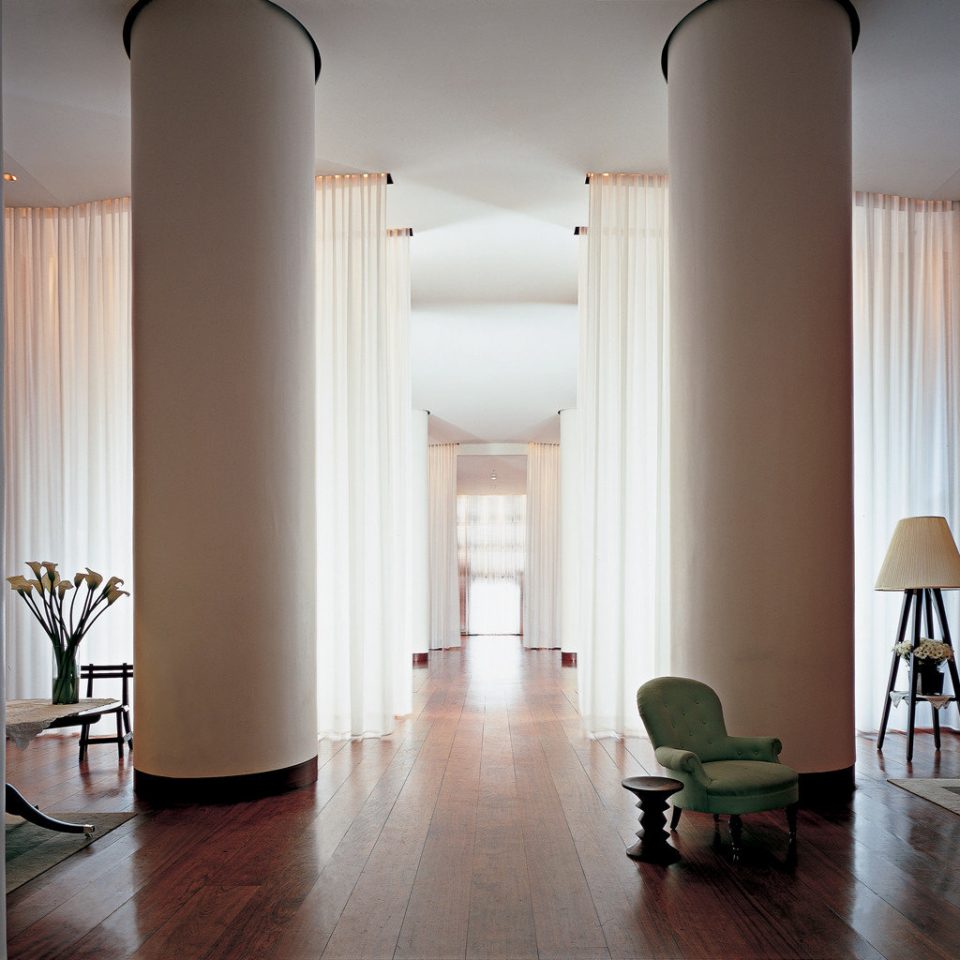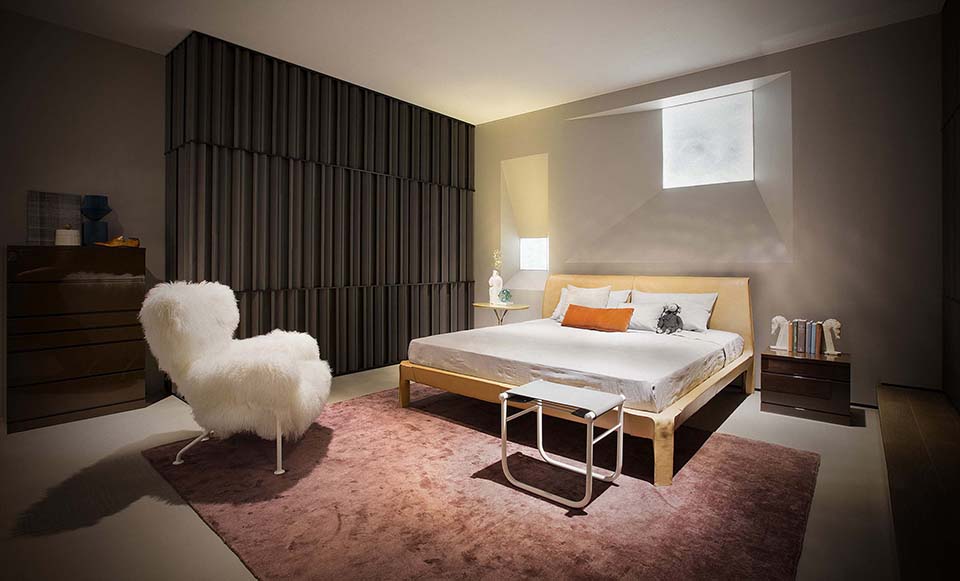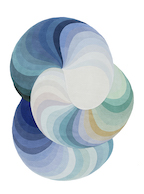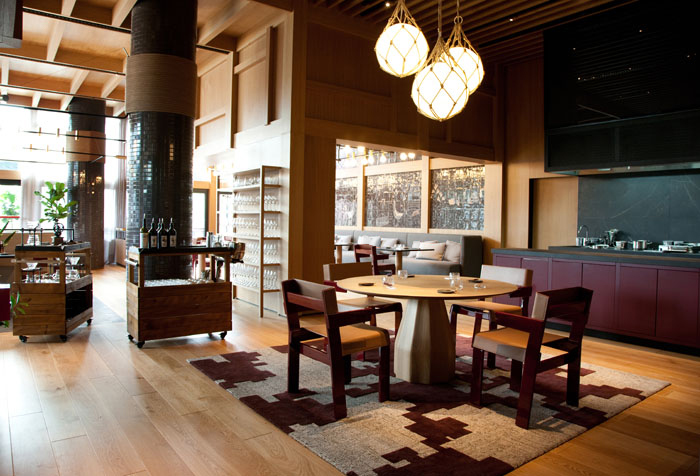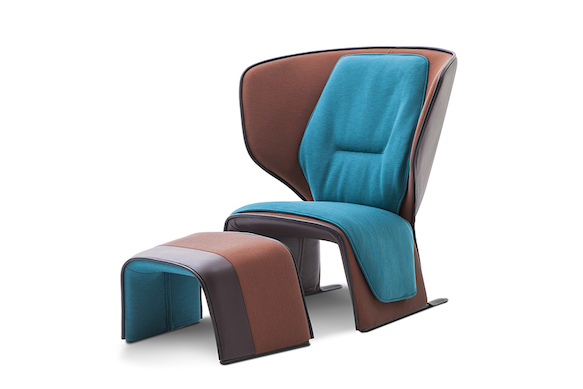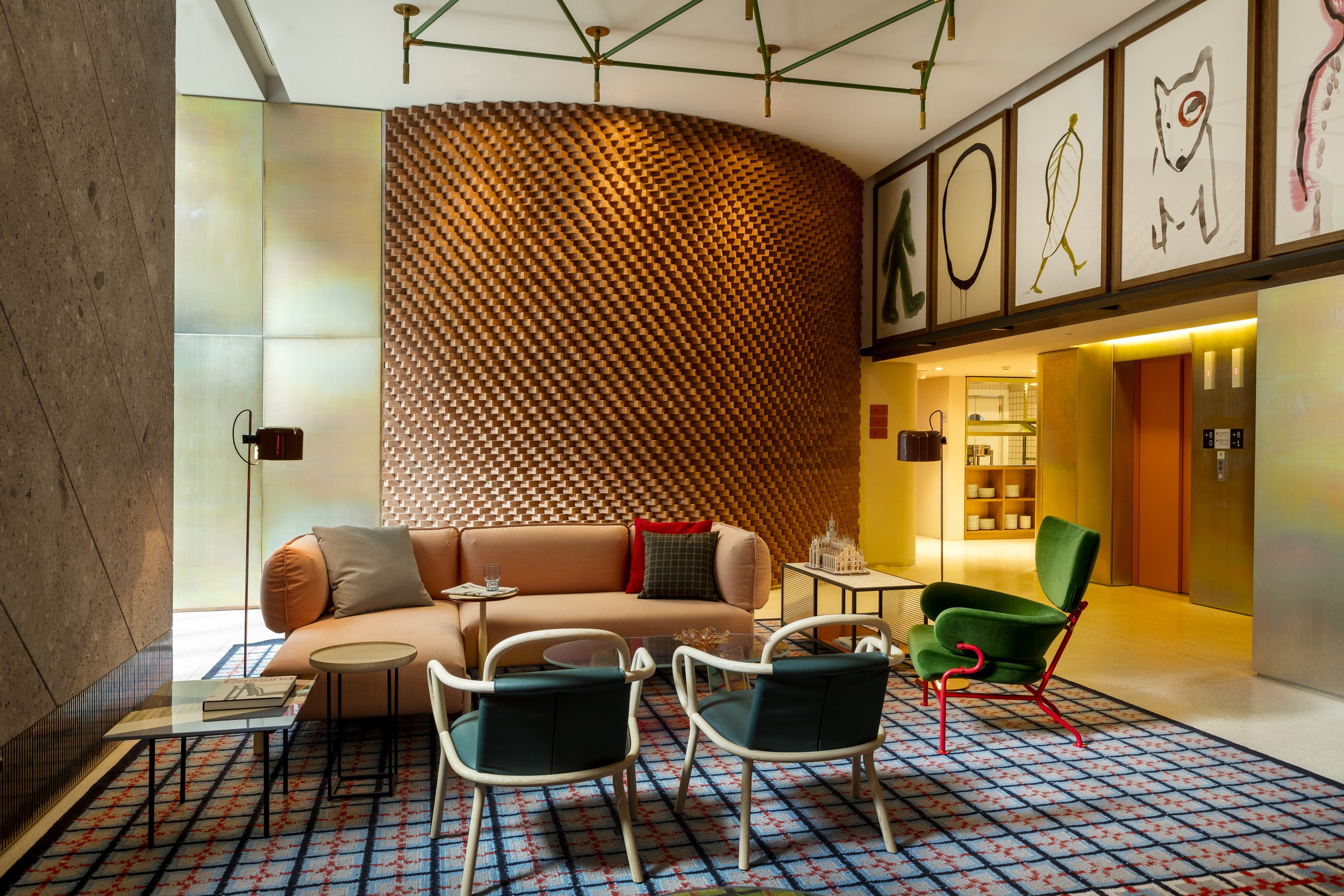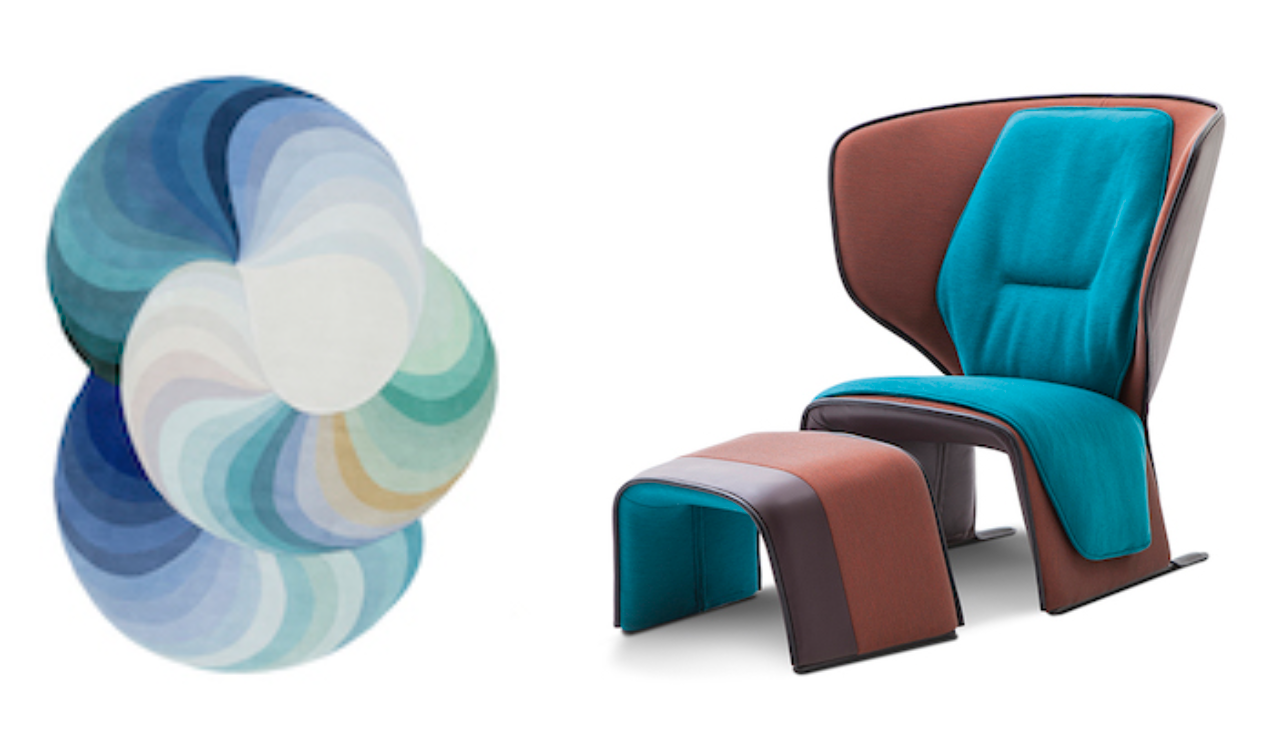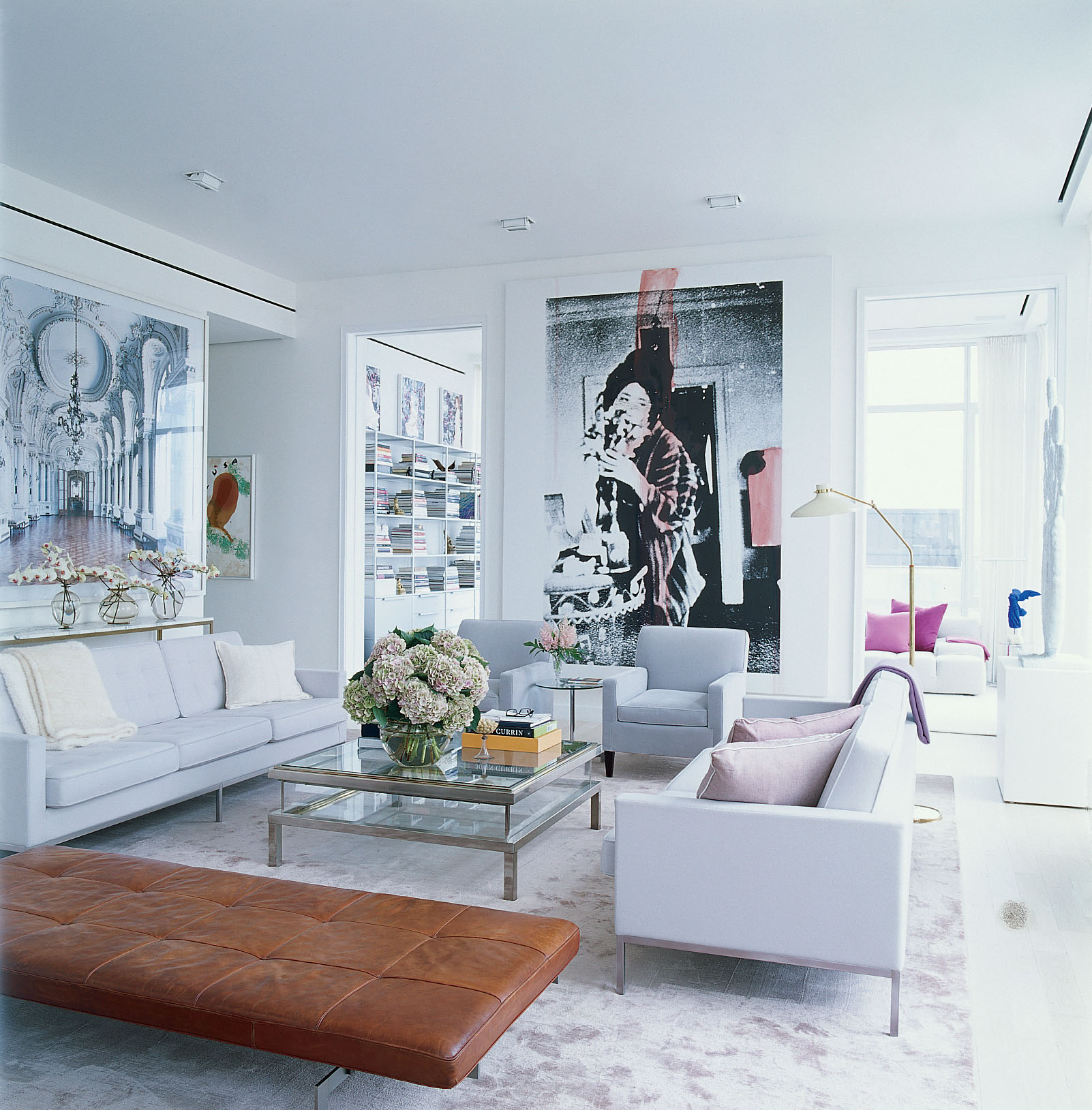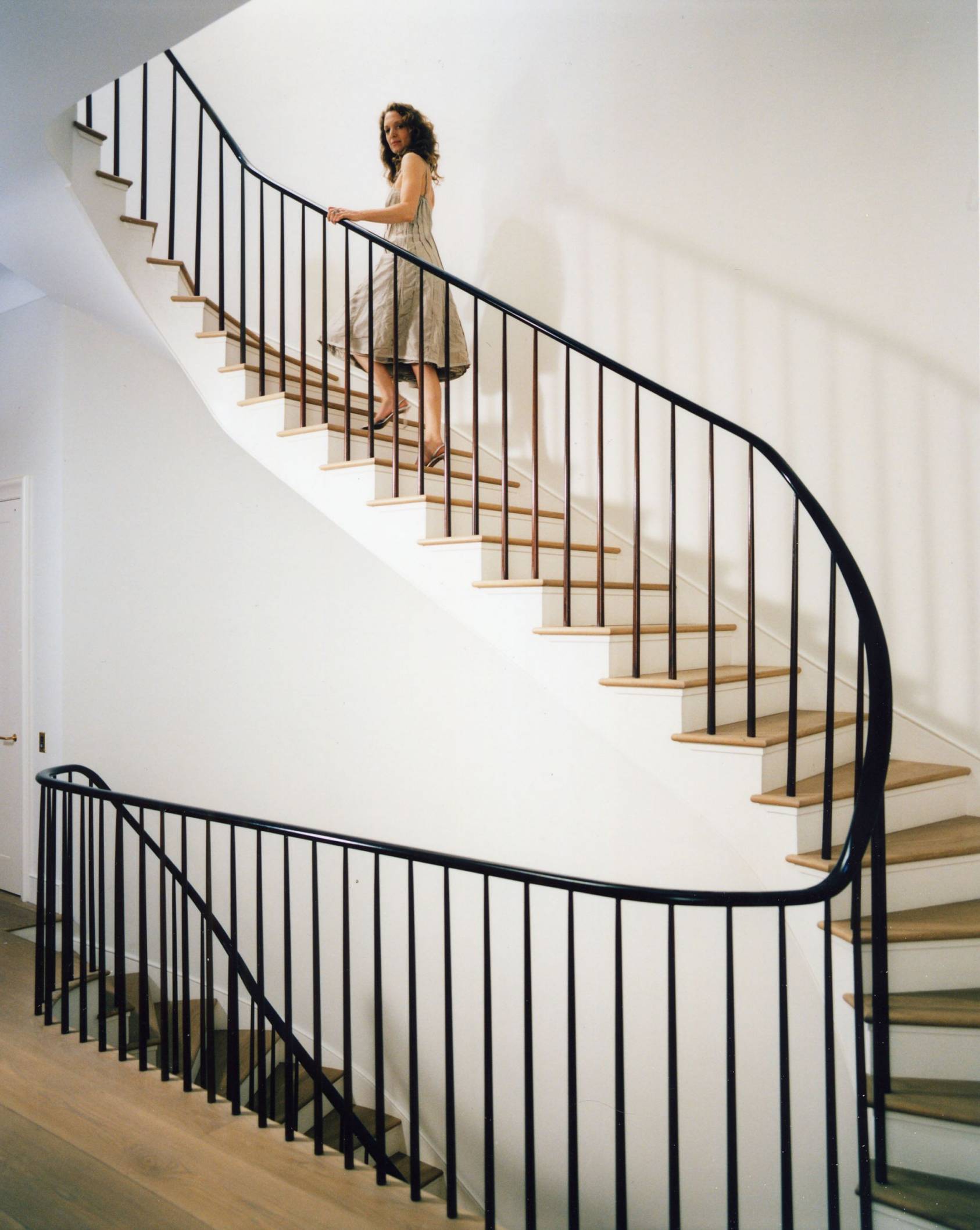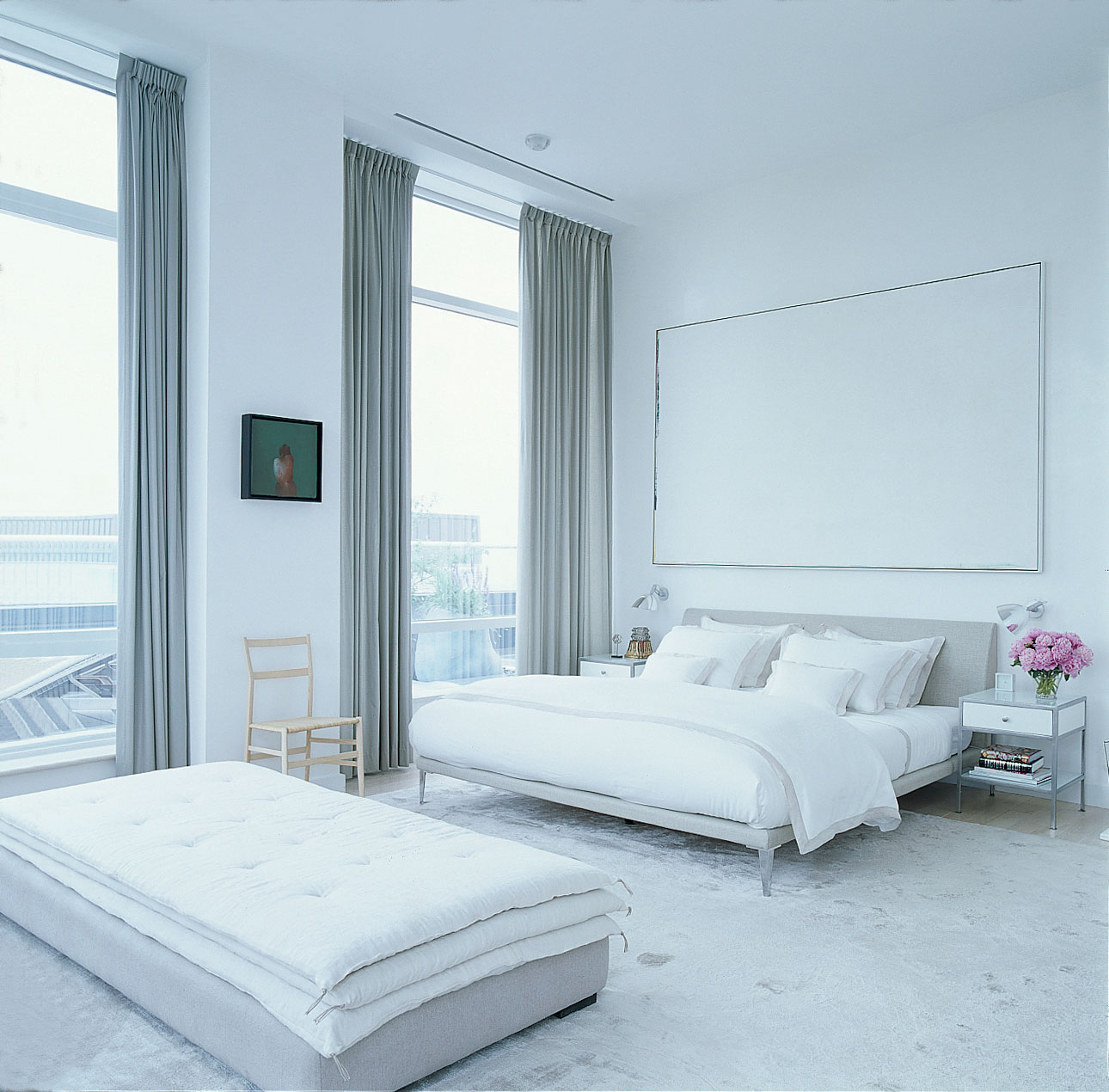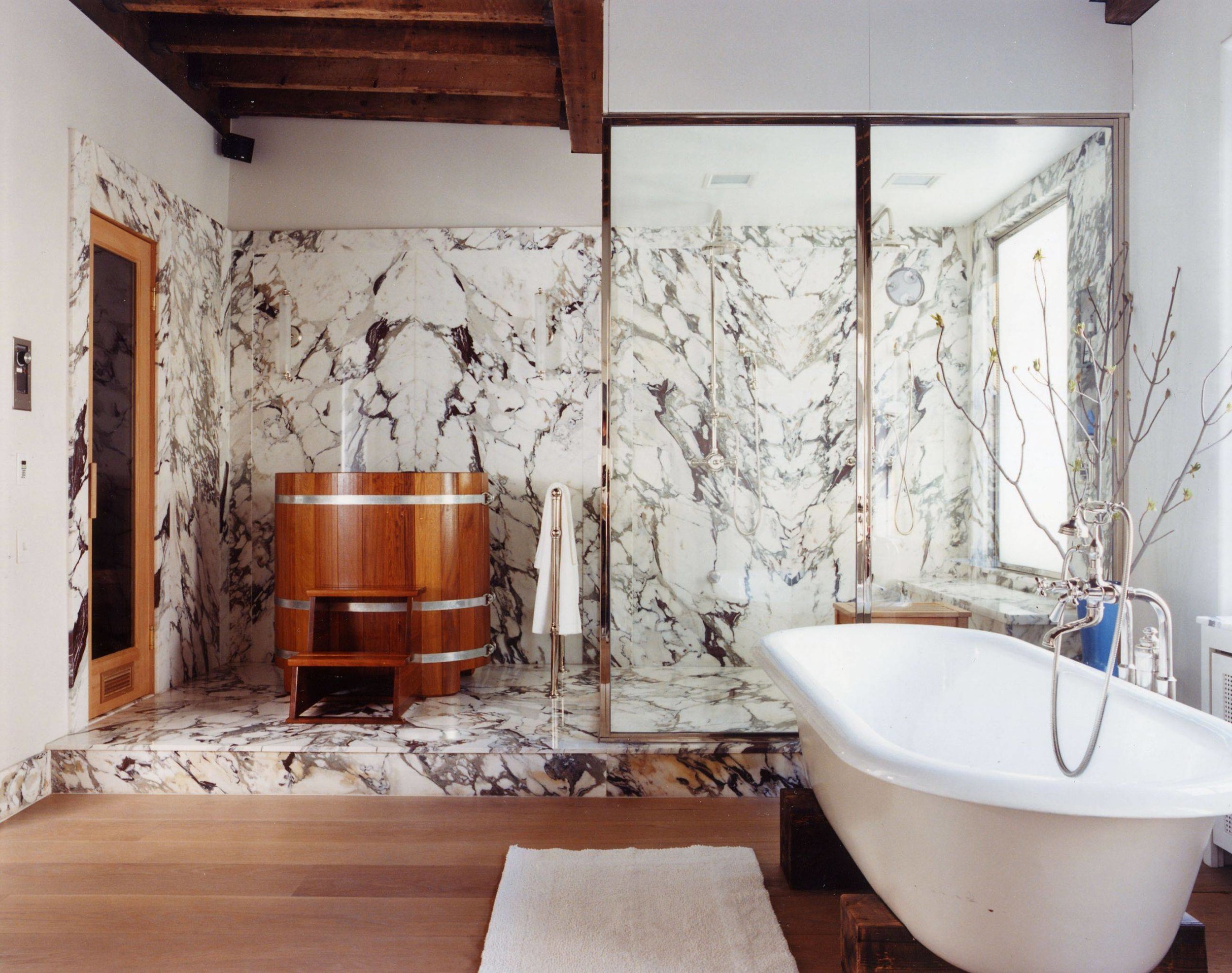Hello and welcome to DOCENT - your guide to design intelligence, creative solutions and earthly beauty.
Today’s DOCENT Briefing highlights the Top 5 Design influences that have shaped my work as an interior designer, design curator, public speaker and life long design devotee. One can’t run a design firm without a clear POV, so here is a look at mine.
MATERIALS AND FORM | HERZOG & DE MEURON
If I told you the minimalist clarity of artist Donald Judd’s works inspire me, you would immediately understand my love for Herzog & de Meuron architecture. HdM’s approach to architecture mirrors my own approach to spatial design - refined elements of modernism exist while playfully pushing the boundaries of surface and materiality. Their projects almost always embody a simple complexity. It’s hard to pick a favorite HdM project, but the innovative use of rammed earth, the purist form and bold composition make their Ricola Kräuterzentrum a stand out for me. I’m including the gold clad entrance at their Barcelona Forum as another favorite detail.
COMPOSITION AND EXPERIENCE | PHILIPPE STARCK
My favorite first lived experience of Philippe Starck was walking into the lobby of the Miami Beach, Delano Hotel in the mid-90s. I was living in NYC and attending Pratt at the time so had spent time at the Paramount and the Royalton. This lobby was full of human hustle, yet the theatrical handling of the interior design created a wave of excitement inside me. I felt hypnotized by the playful use of opposing scales and the insertion of unexpected elements. I didn’t want to leave the magical space and can still close my eyes and transport myself there. This is the experience I long to create for my clients - a sanctuary for the soul. Philippe Starck taught me the poetics of space. I fully embrace his utopian ideals that aim straight for the heart and highlight the essential.
Delano Hotel Lobby, Miami Beach
Repetition and Scale
ORDER AND BOLD SIMPLICITY | LUDWIG MIES VAN DER ROHE
In the late 30’s when this visionary German architect landed in my home state of Illinois to teach architecture, my destiny was changed years before I was born. Mies is the grandfather of modernism, a new architectural style he forged with extreme clarity and a deep belief in the power of simplicity. My aesthetic and ethos is built on his vision of minimal architecture that creates free-flowing open spaces. His “skin and bones” approach to architecture guides my creative process and helps me balance the emotional needs of interior design with the technicality of architecture. When in doubt in a middle of a project, I recite Mies –“less is more” and “God is in the details”.
Farnsworth House. Plano, Illinois
Lakeshore Drive Apartments
EXPERIMENTAL, COLORFUL AND BOLD | PATRICIA URQUIOLA
Lest you think I am all minimalism and no play, I submit my love for the creative fusion that is Patricia Urquiola. What most appeals to me in Patricia’s work is her dedication to rethinking and reimagining tradition and materials. I see her as a design innovator, inventor and storyteller. Her mastery of several related subjects – from architecture to textiles to color theory – allow her to work in an interdisciplinary way. The result is a magical combination of play and pragmatism and poetics and function. She doesn’t reject the past, she brings it into the present in a fresh way. I am fascinated by her creative process and always feel refreshed when coming across her work.
QUIET ELEGANCE AND NUANCED BEAUTY | ANNABELLE SELLDORF
And lastly, my appreciation for Annabelle Selldorf who remains faithful to crisp lines and clean proportions of early modernism but also adds a feminine elegance to the canon. Her “gentle modernism” feels like a maturation of the architecture style and one that is well suited for this particular moment. I admire her commitment to architecture deeply rooted in humanism, which soothes my soul. Not surprisingly, her firm is a favorite of galleries and cultural institutions who seek out her elegant and refined spaces to elevate works of art. And that just might be the subject of my next DOCENT briefing – the power of well curated art to bring a space to life.
Putting together this list of my Top 5 design influences, I realized they all studied architecture and were committed to the principles of modernism. I suppose this summarizes my approach to interior design nicely. I see interiors in conversation with their exterior environments. One naturally feeds off the other. Balancing the needs of both keeps my right and left-brain happy.
If you enjoyed this DOCENT Briefing, send me a note or feel free to pass it along to a fellow design enthusiast.
Until next time,



